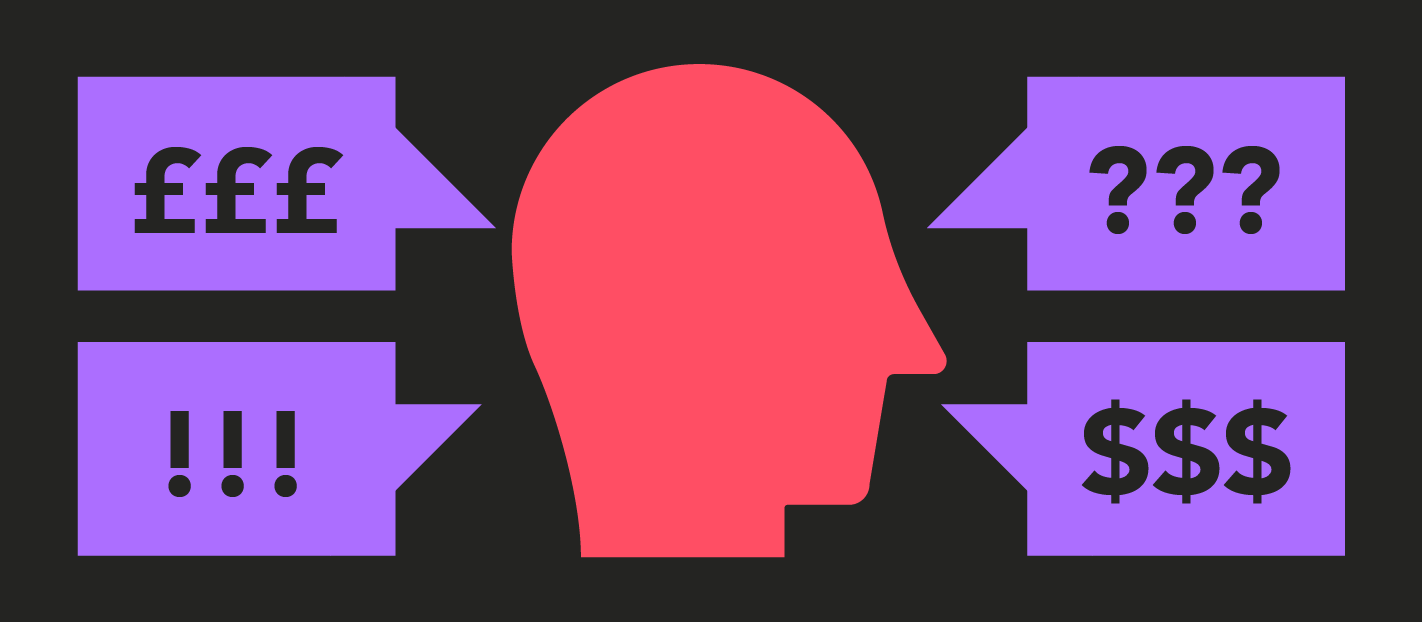
Here at GoSquared, we emphasise the importance of understanding our customers, and our potential customers, as people– and getting to grips with behavioural signals is a crucial element of that.
Just as body language and tone of voice can help us to navigate a social situation, they can also help us to understand a huge amount about your potential customers.
Sales, customer experience, and business development professionals are usually very emotionally intelligent; they naturally pick up on the feel of a room and the mindset of whomever they are meeting with – but if this doesn’t come naturally to you don’t fear!
In this post we will break down the basics of reading behavioural cues and how using this knowledge can help you to understand your potential customers better – resulting in happier customers, more problems solved, and more deals closed. A real win-win(-win)!
What are behavioural signals?

Behavioural signals, also known in this context as “buying signals” or “sales triggers”, are behavioural cues that display the intent of a lead and their readiness to buy.
From the moment someone first hears the name of your product through to them being a loyal and happy customer (and arguably, beyond that) they are on their customer journey with your company.
Being able to identify these buying signals as early as possible, and understand where on the journey your lead is, can help you to improve your lead-to-close time. It’s all about surfacing the most opportune moment to reach out.
Identifying this behaviour to qualify your leads can be difficult, but there are a few key criteria that you can look out for. Traditionally, in the offline world, buying signals have been broken down into two main types of behaviour: verbal and non-verbal cues.
Key verbal behavioural signals

When they have questions about a specific product
This lets you know that a lead has managed to grasp your wider product offering and has narrowed down one that they feel solves their problem. Take note of the price point of the product they’ve enquired about – this might help you to understand their budget.
When they have questions about pricing
This is a big one. Pricing is very rarely relevant to a lead unless they have established that your product or service can solve their problem. Once a lead asks about pricing, it’s time to make sure you communicate that the value of your offering outweighs the price and begin to close the sale.
When they have questions about your company
Questions around your company’s history, size, and existing clients usually occur when a lead has already established you can solve their problem, and solve it at the right price. This type of questioning signifies that they are establishing reliability and peace of mind.
When they have questions about payment types or terms
A lead at this point has most likely established that they are satisfied with your product/solution, price, and company, and are now working through the semantics of purchasing. This behaviour is a genuine indicator of purchase intent and readiness to buy – it’s time to get excited and be there to remove any final barriers to closing the sale!
When they ask “What are the next steps?”
While it can be tempting look at this an opportunity to set out of a plan of action for the next steps, this is often a lead telling you they’re ready to buy now. Good salespeople should be looking to close the deal or get a commitment from the lead at this point.
Key non-verbal behavioural signals

Certain people can be less talkative – sometimes intentionally not to give too much away. Still, in these circumstances, there are a vast array of non-verbal behavioural signals you can pick up on.
When they nod their head
It’s something that can occur unconsciously but if a lead is nodding their head when you speak, or during your presentation, it’s a sign that they are in agreement with what you are saying and have bought into your argument.
When they look you in the eye
Nobody likes the feeling of being sold to – done poorly, it can be an uncomfortable experience that feels slimy. When a lead maintains eye contact it’s an indication that they are comfortable with you and that you’re coming across as genuine. There is a greater chance that your arguments are delivered without the preconceived bias that you’re just trying to sell something.
When they spend considerable time looking at one product
Similar to asking questions about one product, there is a sign here that something has grabbed the lead’s attention. It’s an opportunity to reach out and help the lead to establish how your product solves their problem.
When they look around for someone to help them
At this point, a lead is fairly convinced or at least has an idea that your product can help, and is looking for confirmation. Try to gain an understanding of your lead’s buying process. Do they have to sell your product internally to their manager? Make this easy for them by working out what they need – statistics, case studies? Provide them with the information to help alleviate any doubt and guide them towards the close.
That’s all well and good for offline sales, but what happens online?
Approximately 67% of the consumer journey happens online. So, if that’s the case, are the opportunities to tap into these behavioural moments lost?
Not necessarily. The reality is that these behavioural moments for our leads are still happening; they are just a little trickier to pick out than if they were standing in front of us.
For example, non-verbal clues can be discovered through analytical data on your website. With the right tooling, you can see how many times an individual lead has looked at a particular product or page, and for how long. You can see if they’ve moved from a product page to a pricing page. You can see that they have read several blog posts to give them a background and educate them.
All of this data can feed into your lead scoring system, and when passed to the sales team can significantly improve their ability to convert a lead.
At GoSquared, we use the online behaviour of our leads to qualify them and give them their own behavioural lead score – test it out for yourself.
What about verbal signals when we’re online?

Verbal signals can still be picked up if you give your prospects ample opportunity to communicate with you.
Using a searchable FAQ page, or even encouraging communication via email, is one way to do this. But, we think these methods are outdated.
There are quicker, more interactive, more human, ways to get the conversation going.
While live chat tools have traditionally been used for online support, more and more companies are turning to live chat as a tool for sales.
Live chat is unique in that it allows your sales team to respond to website leads in real-time and take advantage of reading these verbal and non-verbal buying signals.
Even though things like eye contact and head movement are lost, they are replaced by signals like the speed and tone of response from a lead.
How to start building buying signals into your sales process

While every company’s customer journey will have its nuances, a lot of the fundamentals will remain the same.
Map out the customer journey
Start by walking through your customer journey and mapping out the key moments where a prospect could display purchase intent and build a planned response for that moment.
For example, if a lead spends over 30 seconds on a page, or asks repeated questions about a specific product, you can schedule in an automated prompt or message to arrange a demo. Alternatively, if a lead asks about pricing it’s a good opportunity to clarify their intent to purchase by attempting to close the sale.
Ensure you have real-time alerting in place
If a significant proportion of your customer’s journey happens online, set up notifications for your sales team to make sure a potential lead isn’t missed. For example, if a prospect views your pricing page; notify your sales team with an email, or log a task for them in your CRM.
Finding the right tools to assist with this will help to make responses to behavioural signals part of your sales culture and process. Still, you can learn a lot by allotting some time to better understand your customer’s wants and needs at different points in the journey.
Put yourself in the shoes of the buyer
Try to put yourself in their shoes and imagine the considerations and concerns you might have when approaching your product for the first time. After all, the best way to sell your product is to understand your customer’s needs.
Having a sales team who are aware and prepared for these behavioural signals will undoubtedly help them qualify their leads more efficiently and close a higher number of deals in a shorter time period. Remember, at the end of the day you are two people trying to do their jobs as best they can. Take off the “sales” and “lead” cloaks for a moment and connect on a human level.
If you’re looking for more information on how live chat and prompts can assist in your sales process check out this post on adopting live chat as a team, our post about the importance of real-time sales for your website, and this one on how to use live chat for sales.

